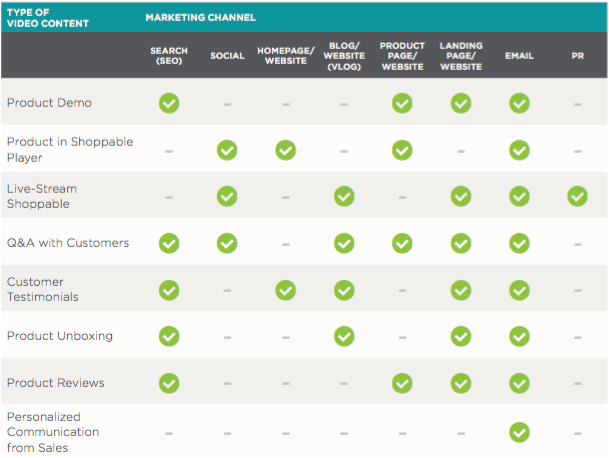Video has a cool factor that sales and marketing teams crave. It’s a malleable medium and makes our brands look great. Yet, both sides stare at a thinning pipeline wondering how to convert more leads. It’s a common struggle: how to ask a lead to take that next step and convert.
The goal of a conversion campaign is to move a qualified lead from a successful conversation with sales to a transaction or point of purchase. Measuring engagement and tracking a prospect’s specifications will reveal if they are about to buy your product or service. At this time, the exchange becomes more active: a business transaction occurs, or additional permission- based marketing activities take place. Which leads us to the question: What are the kinds of videos people convert on? As we’ve said before, the right video at the right time to the right person can do wonders. Let’s discover which kinds of video perform best and which can make the difference between reaching your quarterly numbers or crying into a soggy spreadsheet.
Why Video Works in the Conversion Stage of the Customer Journey
Tip the scales. Video works in the conversion stage because it is naturally persuasive. Thus, it can overcome objections when paired with skillfully constructed landing pages and e-commerce product pages. Using videos on landing pages can increase conversions by up to 80 percent. Consider creating product-specific content like product demos, Q&A sessions, customer testimonials and customer review/unboxing videos. Video pulls your potential customer into the experience, allowing them to share in the excitement, satisfaction or confidence felt in a new purchase. Some videos can be interactive and shoppable. Allow consumers to buy products directly from within the video simply by clicking products shown on screen.
How to Create a Video Conversion Campaign: Key Questions
- What does “conversion” mean for this specific campaign? What is your intent and how do these videos move the prospect to this goal?
- Will the call-to-action reside as an in-video or in-player trigger, a button on the page, or a lead flow form?
- If conversion doesn’t happen, is there a next-best action the viewer can take to continue the journey? (For example, watching the next video in a playlist.)
Also, consider interactive video elements. They take video watching from passive to active and give your viewer something to do before filling out a form. When they’re accustomed to interacting with your content, clicking through on a CTA and providing more information doesn’t seem as foreign because the exchange has already been taking place.
Where to Promote Your Video Content
In our Video Marketing Hero’s latest guide, Strategies for Video Marketing Across the Customer Journey, we’ve included handy charts so at a glance you can understand what you should post and where. Conversion videos thrive in email, and on landing and product pages -- the channels where prospects expect to receive an offer. As for the content itself, act as if you already have familiarity. After all, we started out with a handshake, then a conversation and now the relationship is established. Boom. Maybe you’re friends, maybe you’re more, but the prospect saw something in you worth taking a chance on. Use this opportunity to create content that builds confidence in their choice.

What to Measure: Key Metrics for a Video Conversion Campaign
Make those sales. Well, sort of. While a purchase is great, there are numerous ways to measure conversion.
- Rate of email subscriber list growth
- Average time before purchase
- Average lead velocity across the campaign
- Rate of cart abandonment
- Lift in shoppable video sales / Growth in sales from shoppable video players
- Total number of sales or pipeline opportunities created
So what’s next? Conversion video campaigns falter when marketers don’t create content that addresses points of resistance. Use video content to lower the barrier to entry and be patient. Release these videos where they belong within the series of content (rarely on your homepage for example), or run the risk of seeming too pushy. To get started, review the content produced before this point and align it with your sales process. What are the answers and information they’re primed and ready to receive? Then, deliver on your promise.
Create Videos for Each Customer Lifecycle Stage:

